Developing Traditional Games-Based Tourism experiences. Challenges and perspectives: the Tocatì ways for Living Heritage Journeys
The Tocatì pilot will focus on safeguarding traditional games and sport as elements of living heritage in the contemporary cultural life of the Veneto Region. We are happy to share some key aspects that emerged from the pre-pilot phase, illustrating the choices made in the pre-pilot phase, the tools designed and used, and finally some key – results of the pre-pilot step.
General Premise on traditional games and sports as living heritage expressions
The Tocatì program unites together in a large and diversified network, different groups and communities, practicing traditional games and sports, ludic activities with high social value and impact, which are practiced in public or private spaces. Many of these practices are sports, involving outdoor activities, often with the use of traditional tools (balls and small balls, sticks, stones and bowls, stilts, cheeses and tumbles, traditional boats of the most diverse shapes, with oars or sails, hands like in the game of morra, or the body as in wrestling’s traditions...), while some others, such as card games or board games, are indoor activities that can take place in public or private spaces. All these activities promote individual and social well-being: that of the individuals and of the community.

© Associazione Giochi Antichi, Verona
A fundamental characteristic of these ludic practices in the Italian context is that they are played/practiced in the cultural spaces of the community: town squares and streets, courtyards, countryside, gardens, beaches, rivers, lakes and lagoons. Around the group of players larger communities of enthusiasts follow the development of the game. While training can be regular and constitute a systematic opportunity for socializing, very often the game is played and shared during the celebrations and rituals that mark the seasonal rhythms of local life.
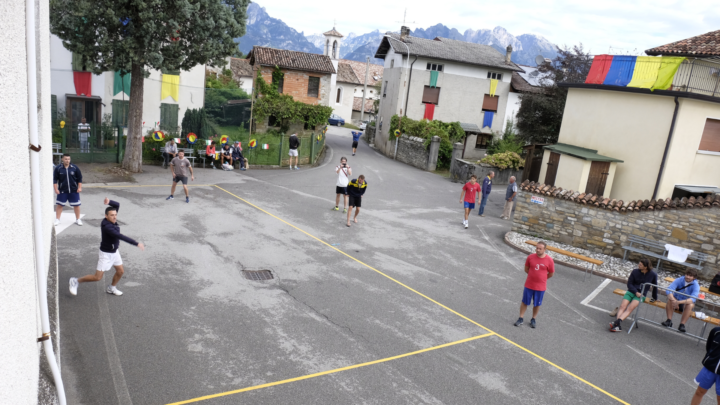
© Associazione Giochi Antichi, Verona
In the local contexts, competitions do not have the character attributed to it by the processes of sportification and professionalization, but remains linked to the enjoyment of the group and the inclusion of all, players and community members. Many of these practices, once reserved for men, are being transformed to include women. A strong element of these ludic cultural expressions is the deep connection with the life of the community and ICH in general, involving: agricultural, pastoral, food, craft, festive, ritual and social practices.
Often invisible, as incorporated into local life and not recognized by institutions as expressions of culture, not institutionalized in either a cultural or sporting sense, these practices suffer from a lack of recognition, while they constitute an extraordinary social and cultural resource, improving social inclusion, intergenerational dialogue, the knowledge of nature and the universe, the transmission of craftsmanship abilities, individual and social health: sustainability at large.
This premise was necessary to understand in a deeper and more connective way the choices made by the Tocatì network, regarding the ICH Journeys project and the pre-pilot phase.
Why the Veneto Region? Why three traditional games?
Keeping in mind the network spirit that characterises the Tocatì programme, AGA, the “ancient games association”, has chosen to concentrate its efforts on the regional level and on 3 realities (and ludic practices) that allow working on the complementarity between 3 geographical and cultural contexts: Venice and its lagoon, a mountain village - Farra di Mel in the Belluno area, The city of Verona and its province.
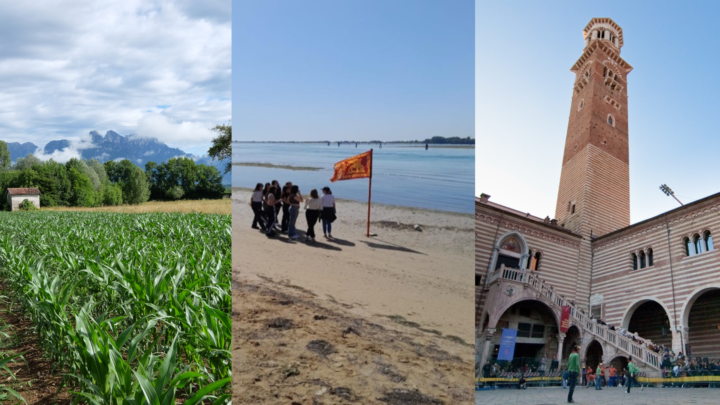
© Associazione Giochi Antichi, Verona
First key element to consider: the regional context. We made the choice to build a pilot project at regional level, in dialogue with the institutions of a region that for many years has supported the process for safeguarding living heritage while fostering international cooperation, leading to the recognition of Tocatì as a Good Safeguarding Practice. A region investing a lot in the UNESCO listing system and governance. The region of Veneto is today a “pilot region” in Italy for cultural policies inspired by the UNESCO Conventions and devoting concrete measures for WH management plans as well as ICH safeguarding practices.
In this Italian region, a movement of players was born in 2002, determined to reclaim squares, streets and public places for the variety of games and sports intended as free, creative activities, free from formalized educational, cultural or sporting contexts. Squares, streets and countryside in this vision are spaces to be protected from the world of consumption and from the dangers of sporting and spectacularization of heritage. They are living ecosystems for expressive forms that favor socialization, dialogue between generations, the transmission of memory, health and well-being of communities. As this map indicates, and as can be guessed from the pictures of the three communities and three selected territories, the dream that supports our efforts is to create three different and complementary touristic experiences, giving the voice to the diversity of local heritages, natural environments and landscapes in close dialogue with three communities of practice. These are three ludic practices that deeply characterize the environment and life of our communities.
You can see:
A mountain village, where a community is living in its squares and streets thanks to its traditional game. The historic centre of Verona, transformed into a playground with the passionate participation of citizens. But we discover that Verona is also surrounded by mountains, and little villages as Cerro Veronese... and all these groups of players are living in a network! And finally, the lagoon with its extraordinary rowing tradition: Here you can see Gloria Rogliani, as interpreter of her voga community: a rowing instructor and her islands. From the diversity of the Venice archipelago a new touristic era is rising!
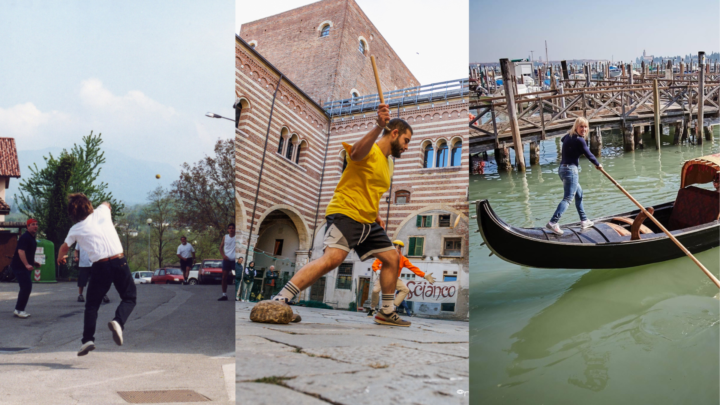
© Associazione Giochi Antichi, Verona
Our pilot aim to build tools for creating and experimenting sustainable touristic experiences based on TGS activities as tools to discover local traditions and contexts, while adapting to contemporary challenges.
The pre-pilot phase: a questionnaire, three workshops in Venice, a deep dialogue with three communities of practice.
What tools have we used to question and involve our network of communities, institutions, and tourism actors, during this year of exploration and research? First, AGA developed a questionnaire, distributing it to all the communities of the Italian Tocatì network. The results have largely confirmed the interest of our communities and their consideration of tourism not (only) as a threat to their practice, but as an opportunity to be developed to strengthen the vitality of living heritage.
3 Living Heritage Journeys-workshops were held in Venice, capital of the Veneto region.
These workshops were organised in three very different places, mixing formal and informal contexts, as well as intellectual and ludic activities. To amplify the impact of the project we inaugurated the pre-pilot phase (first workshop) in the national museum of history and archaeology at Palazzo Grimani. Three round tables allowed us to collect the inputs from:
A round table inviting representatives of local, regional and national cultural Institutions, a round table inviting some representatives of the tourism regional sector, a round table inviting the 3 communities of our pilot.
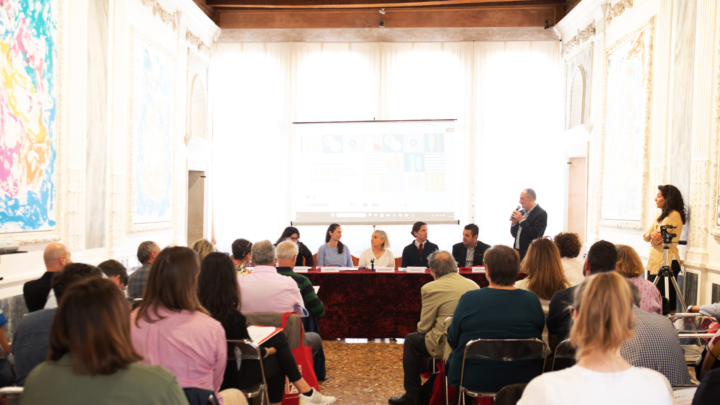
© Associazione Giochi Antichi, Verona
In a second step, we met in the Gloria Rogliani Cavana Tintoretto an old boathouse, in order to analyse more in depth this context, that represents for us a cultural space of the Venetian rowing community, a community centre and at the same time a good practice of tourism development based on the direct involvement of the practitioners. An interview with Gloria allowed us to grasp all the richness and complexity of her experience.
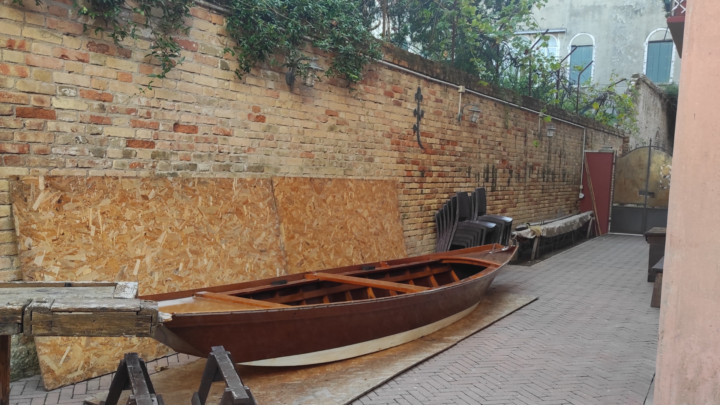
© Associazione Giochi Antichi, Verona
Finally, the last workshop that concludes our path in the Palazzo Grandi Stazioni - the headquarters of the Veneto region.
During this truly strategic workshop, we set up a dialogue around a concrete case study with the institutions responsible for safeguarding living heritage - the Veneto region's cultural sector, regional superintendencies, and the Ministry of Culture. The topic of the normative possibilities to protect a community cultural space was discussed and a concrete process launched.
During all these workshops, we did an effort to balance the dialogue mixing formal and informal moments, as well as the sharing of ideas and ludic practices. During the first workshop, we meet in a bacaro, traditional Venetian tavern, to play morra and taste cicchetti, typical Venetian aperitifs.
During the second one in Cavana Tintoretto, we were immersed in one of the hidden and intimate places of Venice and the Venetians. Finally at the end of the last workshop, we were taken on a rowing tour on the Grand Canal.
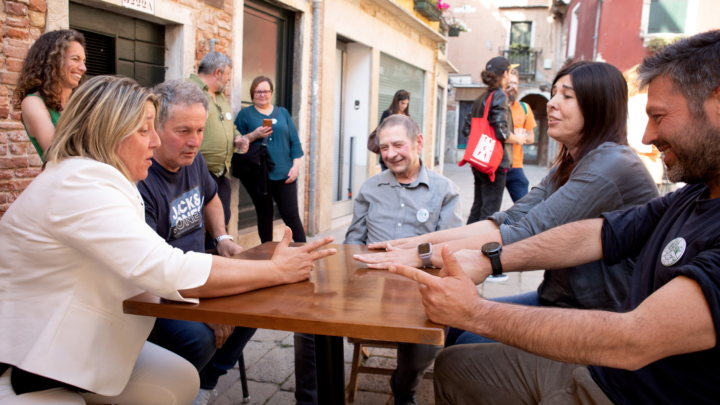
© Associazione Giochi Antichi, Verona
Key takeaways from the workshops
Below, we outline some key takeaways from the workshops and the pre-pilot phase, highlighting the challenges, opportunities and potential ways forward in designing our pilot.
Voga alla Veneziana (Venetian Lagoon)
- Practiced in a fragile lagoon environment that demands careful, sustainable management and protection.
- Voga alla Veneziana provides a model for blending tradition with environmental/social sustainability.
- Venice is already saturated with visitors and affected by overtourism, so the challenge (and goal) is to create a “slow tourism” experience that diverts travelers to less frequented areas, such as the lagoon’s smaller islands, thus sensitizing tourists and Venetians themselves to the fragility of the lagoon system and its necessary protection.
Lippa (Verona & Cerro Veronese in Lessinia)
- Played both in Verona – a very touristic city and in Cerro, a small mountain village in Lessinia.
- Lippa shows how a single ICH element can thrive in both an urban centre and a rural setting, bridging different cultural dynamics – fostering social cohesion/sustainability and the balance between urban and rural contexts
- The challenge is to connect Verona’s established tourist flow with the local lippa community, ensuring that the game’s heritage is recognized, supported, transmitted, with benefits for the inhabitant and practitioners. In Verona, tourists are attracted by the ludic practice during the local events, but there is no possibilities today for this meeting and the practitioners do not have any benefit from the tourism resource. At the same time, the game can attract tourists outside the city of Verona, allowing a better balance in the management of tourist flows
Tò Vegna (Farra di Mel, Belluno)
- Practiced in a small mountain village at risk of depopulation, the game is deeply tied to local identity, functioning as a social bound that brings people together during festivals and local events. Cultural spaces are fundamental and in need of protection.
- By incorporating Tò Vegna into tourism initiatives, the community aim to create future opportunities/local business for this mountain village. The challenge is to reinforce a key element of the local intangible heritage, fostering a sustainable community-based and slow tourism development, without loose the local control and building new sustainable business opportunities.
Looking ahead
Here are some key points that emerged from the experience of the 3 communities, useful for developing the pilot project and which we will take into account in the design of the pilot.
- capacity building workshops based on the exchange of practices and the cooperation between all stakeholders can create strong opportunities of ICH based governance in the touristic development, involving institutions, communities, tourist workers and other stakeholders - network building and multilevel governance.
- development of a documentation and communication strategy - heritage sensitive documentation and communication activities
- design of tourist itineraries/ “heritage walks” (communities storytelling) and experiences, guided by the bearers and associated with existing local events, to be strengthened in a network logic at the regional level - community empowerment and local business
- taking into account normative measures for the protection of the cultural spaces and the safeguarding of associated elements, as craftsmanship’s – cultural spaces protection and other safeguarding measures
Together with the communities and some actors of the tourism sector - such as Pasqualotto's Ways agency - we have identified some key aspects to enhance, in the development of the pilot.
For the voga/rowing:
- collaboration with young people, also through schools and tourism training institutes;
- relationship with craftsmanship and the restoration of historical boats as well as the recovery of their cultural spaces, shipyards (squeri), sheds (cavane), etc.;
- relationship with other traditions such as knowledge of the natural environment, food ways, craft, oral traditions, and finally
- enhancement of a wider touristic voga itinerary, that of the many and little-known islands of the lagoon that extend well beyond the "walls of Venice".
For the game of lippa/S-cianco:
- connection with existing local events scheduled from year to year such as the "S-cianco city of Verona" tournament and the "provincial championship of S-cianco";
- revitalisation/protection and promotion of cultural spaces such as taverns and of key objects/tools of the game such as the “mare”, a stone from the Adige River, very important in the development of the game and connected to the taverns (places of the third half of the game);
- the aforementioned connection between the city centre and the countryside: the game is a bridge that unites groups of players from the city to the surrounding neighbours, landscapes and villages;
- the relationship with public spaces and groups of tourists, often curious but strangers to the game and who can become participants involved (hospitality) - bringing benefits to the local associations and contributing to build more balanced touristic economies - in favour not only of the monumental and architectural heritage, but of the living cultural heritage (benefit sharing)!
For the To'vegna:
- in a context that is not very touristic - unlike Venice and Verona – this traditional game can become a unique tool to involve the visitor in the local life;
- a touristic itinerary based on community storytelling can help to transmit the story of this local context and its different traditions, in a journey through "places of affection" of the community (the milk museum, the church, the places of To'vegna, the bar…);
- the development of a new "tourist product" can bring a revitalization of the local economy, promoting at the same time the self-esteem of the community, sustainable growth and the safeguarding of the living heritage!
Finally, in the design of our pilot, we wish to improve a participatory and heritage sensitive audiovisual documentation process, combined with an innovative communication and education strategy also based on previous experiences developed in Veneto with the same 3 communities.
A work conducted two years ago (thanks to the contribution of the Ministry of Culture – Central Institute for Intangible Heritage and other stakeholders) with three schools in the territories and carried forward by the students themselves. Which takes us directly, through the eyes of the youngest, into the present-future that we dream!